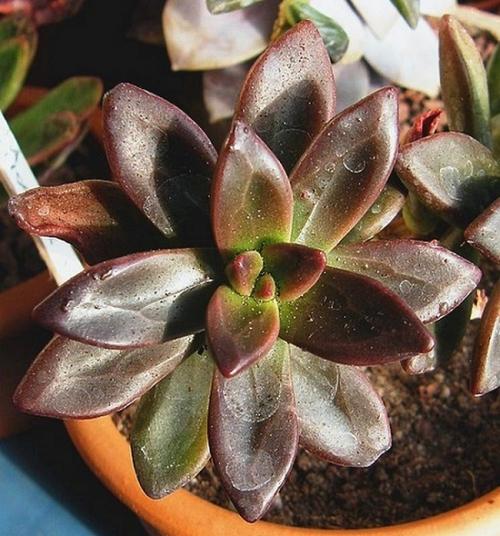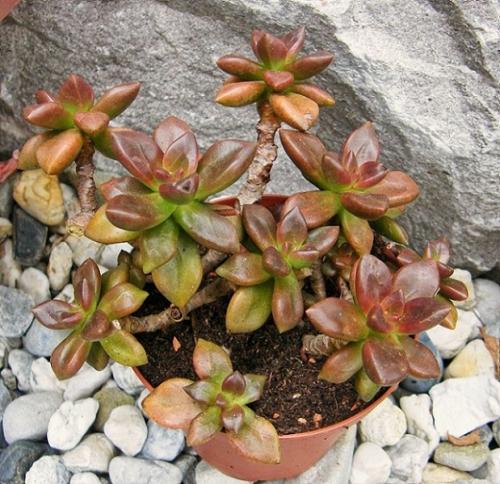COMPRESSICAULIS Eggli & Taylor, 2002 (engl./ fr.)
Series Nudae (according to Uhl, Haseltonia 12, 2006).
Type : Taylor 675, Venezuela, Estado Mérida, Distrito Libertador, 2 km before el Morro on dirt road from Mérida, 2100 m, 15 Jan. 1988.
Etymology : Named for the irregularly sculptured stems.
Distribution : Venezuela (Mérida), rocky hillsides at 2050 - 2100 m, upon stony ground amongst sparse scrub, in the rain shadow of the Pico Bolívar. Only known from the type locality.
First Description by Eggli & Taylor in Curtis's Botanical Magazin 19(4): 224-226, ills., t.450. 2002 :
Plant shrubby, glabrous, to 20 cm tall, laxly branched from the base with spreading-ascending, somewhat woody, stiff branches, usually leafy only towards apex.
Branches to ca 9 mm thick, olive-brown to medium brown, youngest parts pale green, laterally and irregularly compressed and 'angled' with elongate diamond-shaped flattened sections around each leaf-scar, and with irregular, slight horizontal incisions; leaf-scars conspicuous, transversely elliptic, small, ochre.
Leaves laxly arranged into a rosette-like cluster towards the stem tips and retained below if well-watered, horizontally spreading, in cultivation to 48 mm long, 18 mm wide and 9 mm thick, but smaller in habitat, elliptic-ovate, blunt or acute, softly fleshy and thick, irregularly sculptured ventrally from impressions left by the next youngest leaves, without spur but basally thickened and lop-sidedly diamond-shaped in cross-section, dark brownish-green to purplish-green, subglossy.
Inflorescence lateral, from amongst the leaves, ascending, stiff and rigid, eventually to 15 (-20) cm long and 4.5 mm thick, pale greenish-rose to pale pink, compressed and sculptured like the vegetative stems but with slightly elevated whitish 'wings' between the depressions and thus appearing elongate-reticulate, bracts as for stem-leaves, to 16 mm long and 10 mm wide, gradually diminishing in size, pedicels inserted ca 10 mm apart along inflorescence, (3-) 7 - 17 mm long (the longest subtending the oldest flowers), bibracteolate, bracts to 6 mm long, 2 mm wide, pale rose to pale greenish.
Flowers only in upper fourth of inflorescence, 11 mm long, flower-buds patent or slightly nutant, at anthesis patent, sepals 4.5 mm long, basally 4 mm wide, triangular-acute, fleshy, spreading or slightly ascending, basally united, medium brownish-green, corolla 9 mm long and 10 mm wide at base, opening only 4 mm, pentagonal, urceolate to broadly tubular, with almost parallel sides, fleshy and rigid, orange-yellow with paler margins and golden yellow ventral side, petals 9 mm long and 4.5 mm wide at base, apiculate, withered petals brick-red,filaments and anthers pale yellow, nectary scales white, transversely oblong, apically thickened, producing copious watery nectar ....
Cytology : n = 42
Distributed by ISI n° : 2002-20
Link to a summary of the above description in English and French.
Note :
1. Uhl considers E. compressicaulis more closely related to the other Venezuelan species than to the two Mexican species E. multicaulis and E. nodulosa with similarly sculptured stems (Haseltonia 12, 2006).
2. In: Notes on Echeveria in Venezuela IV (Cactus and Succulent Journal US 65 (2): 84-86. 1993) Uhl described as Form #3 an echeveria growing not far from the type locality of E. compressicaulis, which might be a hybrid of the latter and one of the diploid Venezuelan Echeveria species.
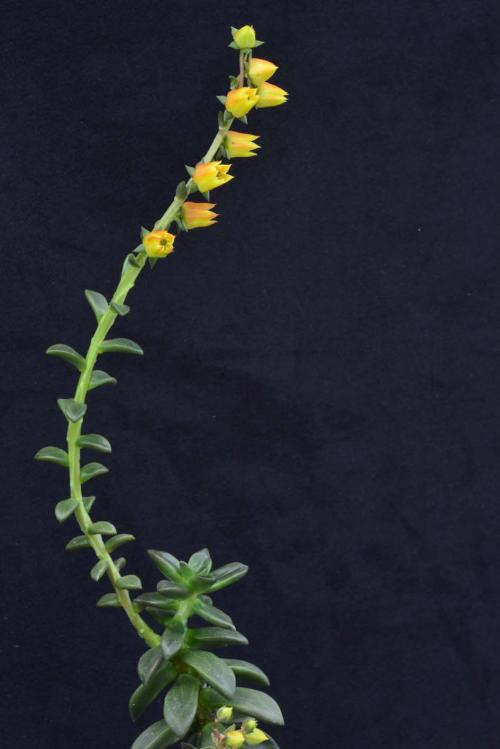
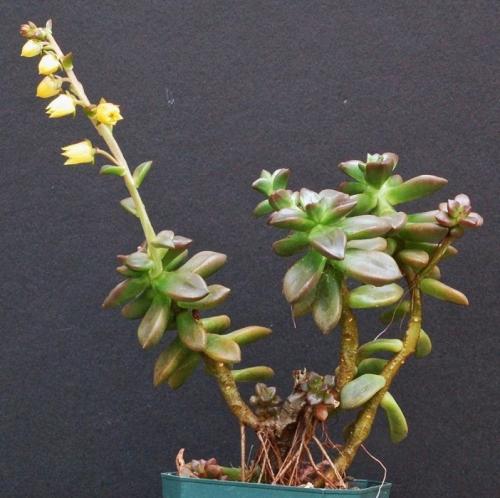
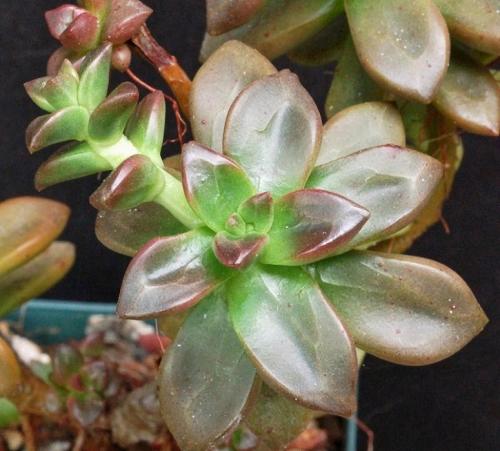
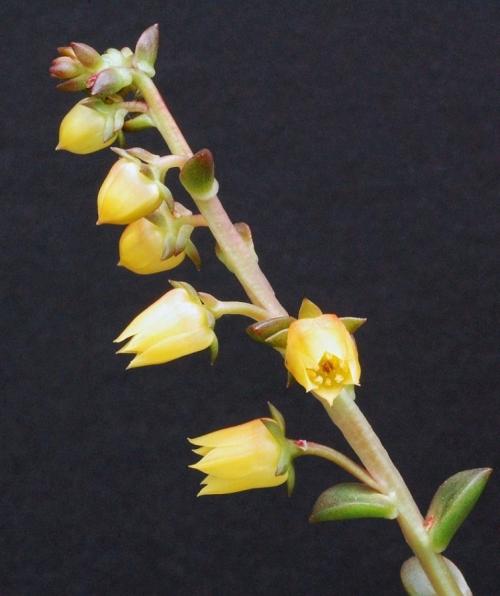
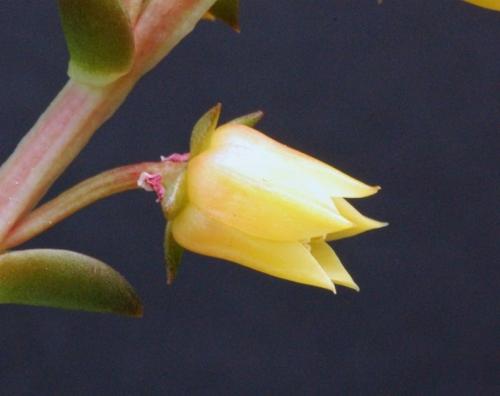
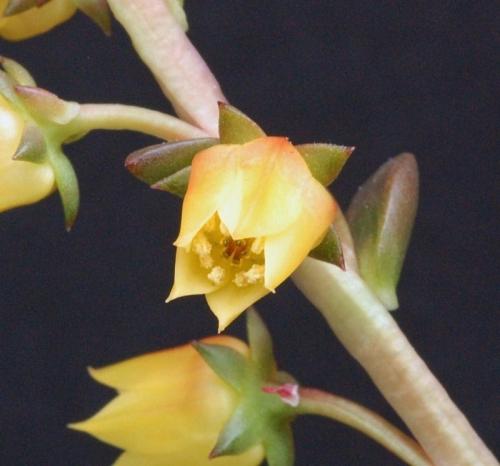
E. compressicaulis ISI n° 2002-20 :
